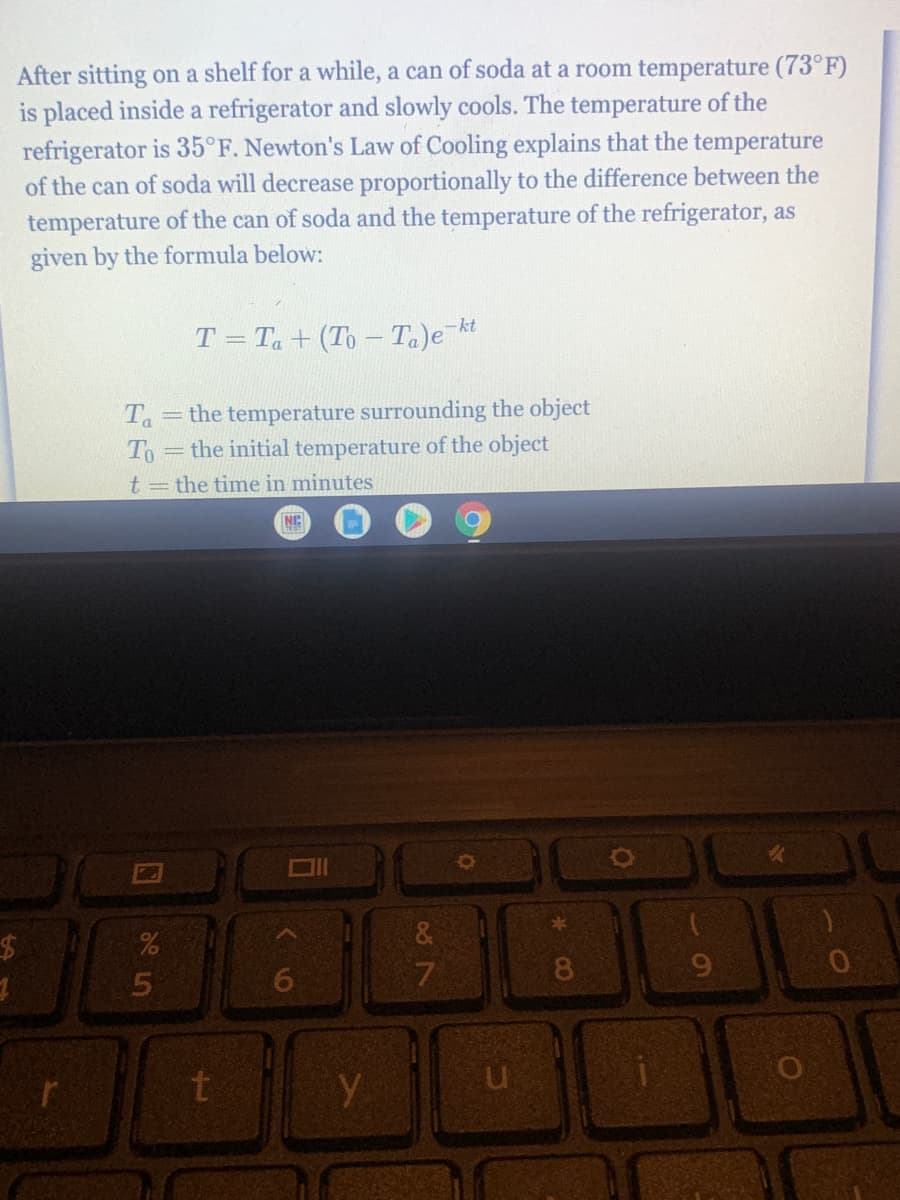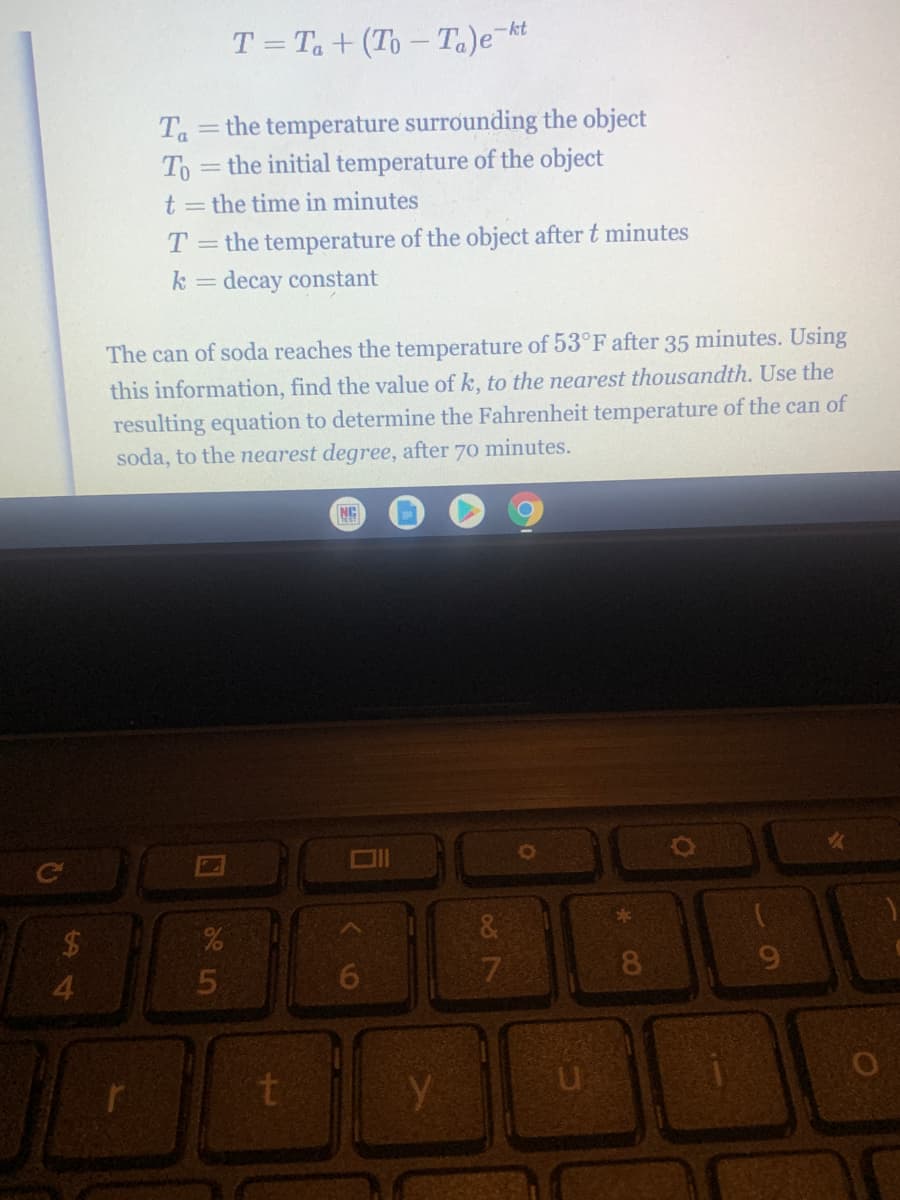After sitting on a shelf for a while, a can of soda at a room temperature (73°F) is placed inside a refrigerator and slowly cools. The temperature of the refrigerator is 35°F. Newton's Law of Cooling explains that the temperature of the can of soda will decrease proportionally to the difference between the temperature of the can of soda and the temperature of the refrigerator, as given by the formula below:
After sitting on a shelf for a while, a can of soda at a room temperature (73°F) is placed inside a refrigerator and slowly cools. The temperature of the refrigerator is 35°F. Newton's Law of Cooling explains that the temperature of the can of soda will decrease proportionally to the difference between the temperature of the can of soda and the temperature of the refrigerator, as given by the formula below:
Chapter3: Polynomial Functions
Section3.5: Mathematical Modeling And Variation
Problem 7ECP: The kinetic energy E of an object varies jointly with the object’s mass m and the square of the...
Related questions
Question

Transcribed Image Text:After sitting on a shelf for a while, a can of soda at a room temperature (73°F)
is placed inside a refrigerator and slowly cools. The temperature of the
refrigerator is 35°F. Newton's Law of Cooling explains that the temperature
of the can of soda will decrease proportionally to the difference between the
temperature of the can of soda and the temperature of the refrigerator, as
given by the formula below:
T = Ta + (To - Ta)e kt
%3D
the temperature surrounding the object
Ta
To=the initial temperature of the object
t= the time in minutes
NC
&
24
6.
7

Transcribed Image Text:T = Ta + (To – Ta)e-kt
Ta
the temperature surrounding the object
To
= the initial temperature of the object
t = the time in minutes
= the temperature of the object after t minutes
decay constant
T.
k
The can of soda reaches the temperature of 53°F after 35 minutes. Using
this information, find the value of k, to the nearest thousandth. Use the
resulting equation to determine the Fahrenheit temperature of the can of
soda, to the nearest degree, after 70 minutes.
NC
&
3-
8.
4.
%24
Expert Solution
This question has been solved!
Explore an expertly crafted, step-by-step solution for a thorough understanding of key concepts.
This is a popular solution!
Trending now
This is a popular solution!
Step by step
Solved in 5 steps

Recommended textbooks for you


Algebra: Structure And Method, Book 1
Algebra
ISBN:
9780395977224
Author:
Richard G. Brown, Mary P. Dolciani, Robert H. Sorgenfrey, William L. Cole
Publisher:
McDougal Littell



Algebra: Structure And Method, Book 1
Algebra
ISBN:
9780395977224
Author:
Richard G. Brown, Mary P. Dolciani, Robert H. Sorgenfrey, William L. Cole
Publisher:
McDougal Littell


Trigonometry (MindTap Course List)
Trigonometry
ISBN:
9781337278461
Author:
Ron Larson
Publisher:
Cengage Learning

Algebra for College Students
Algebra
ISBN:
9781285195780
Author:
Jerome E. Kaufmann, Karen L. Schwitters
Publisher:
Cengage Learning

Algebra & Trigonometry with Analytic Geometry
Algebra
ISBN:
9781133382119
Author:
Swokowski
Publisher:
Cengage